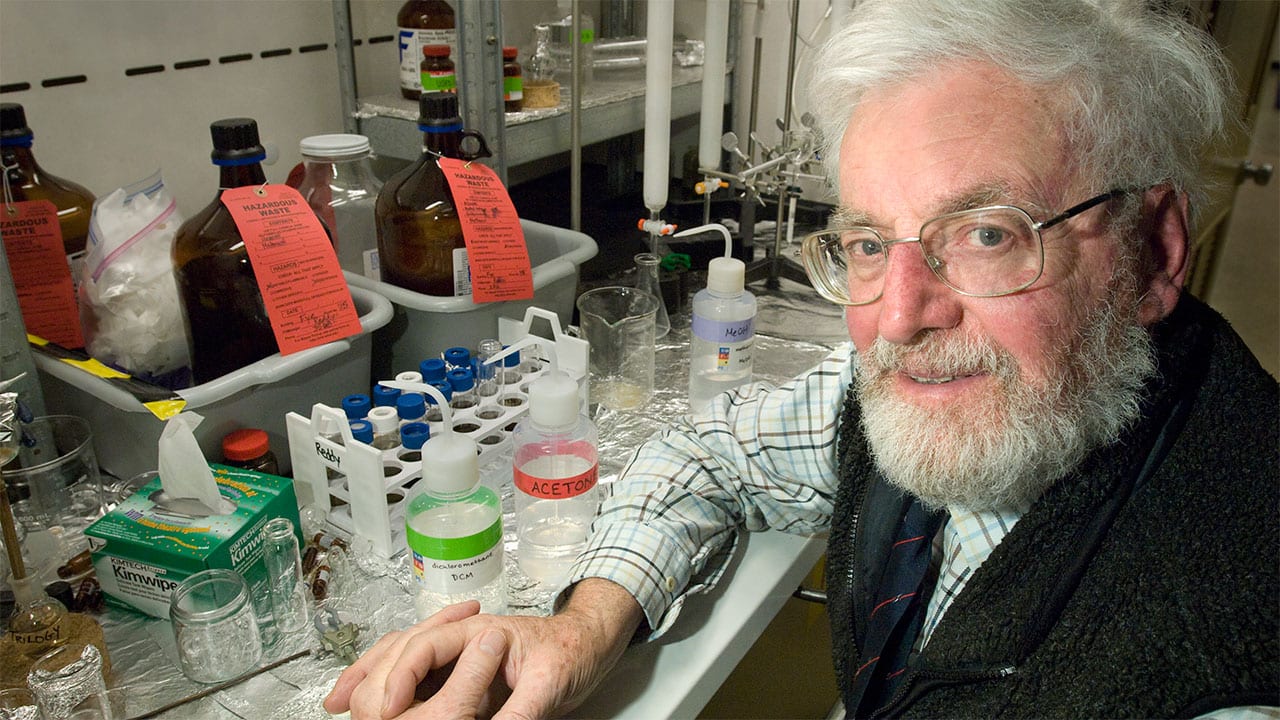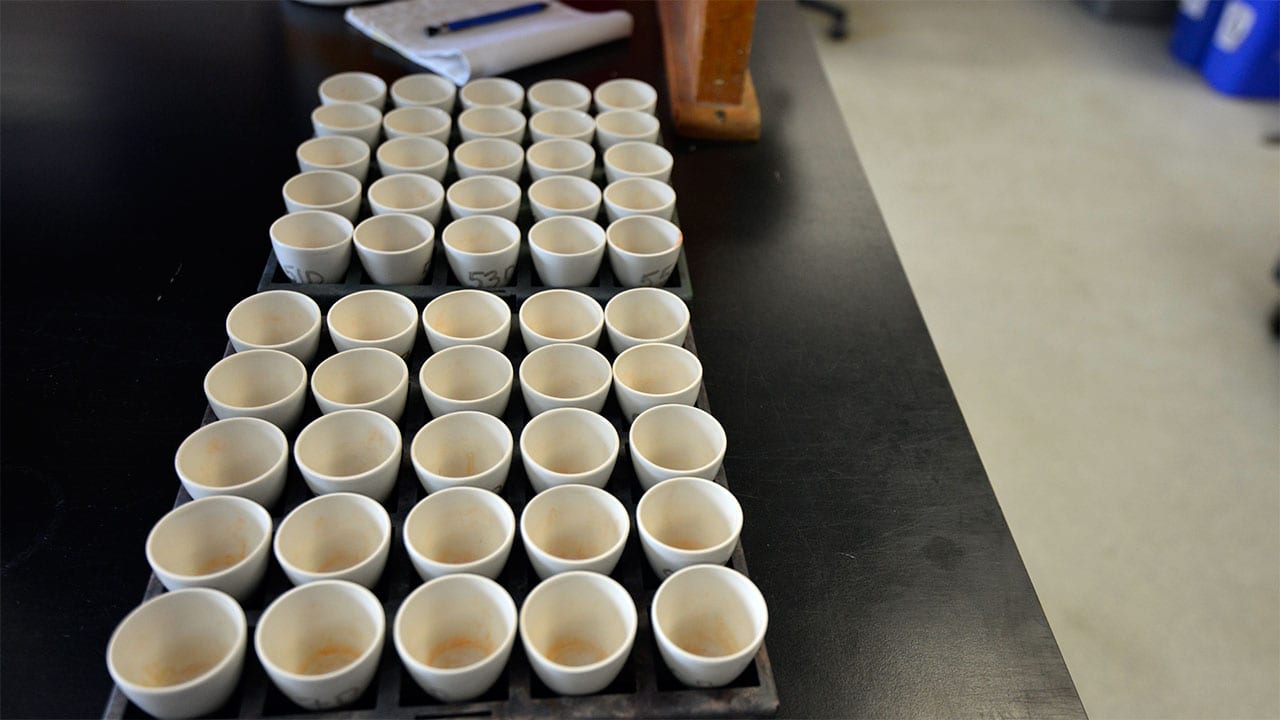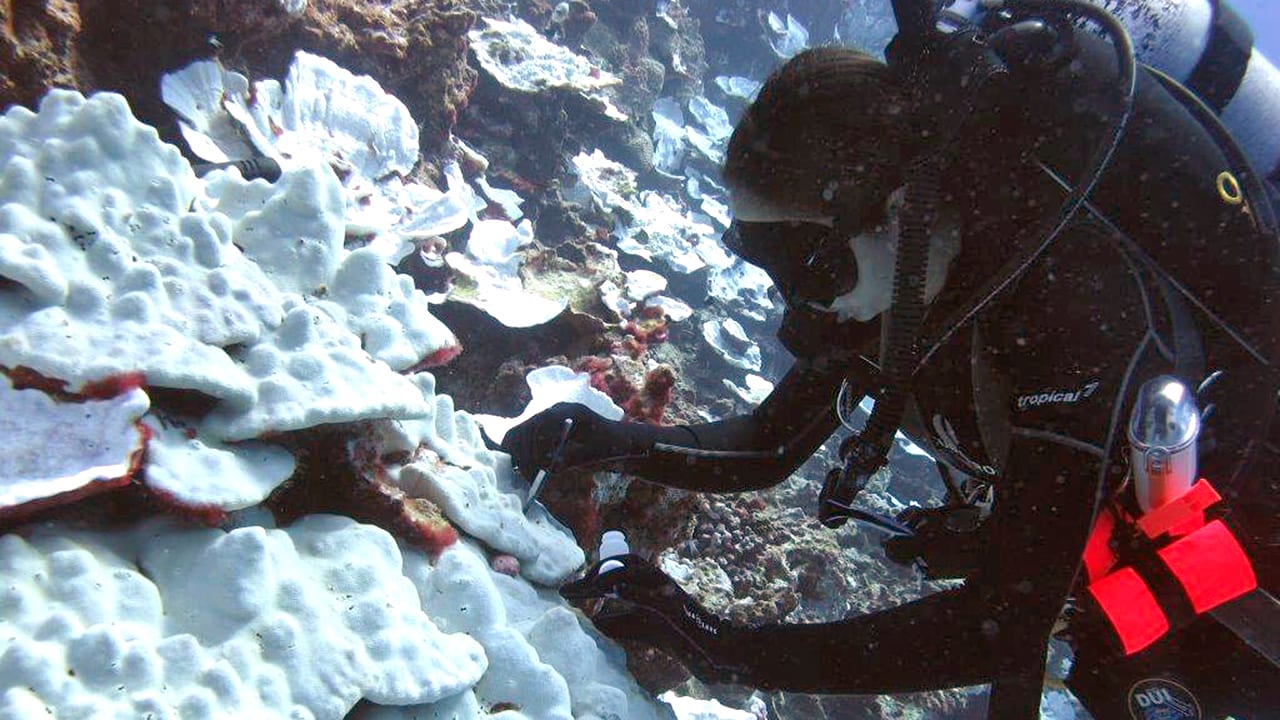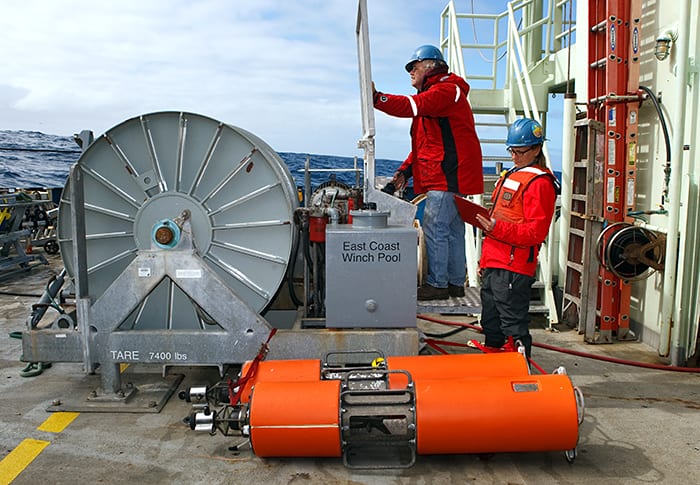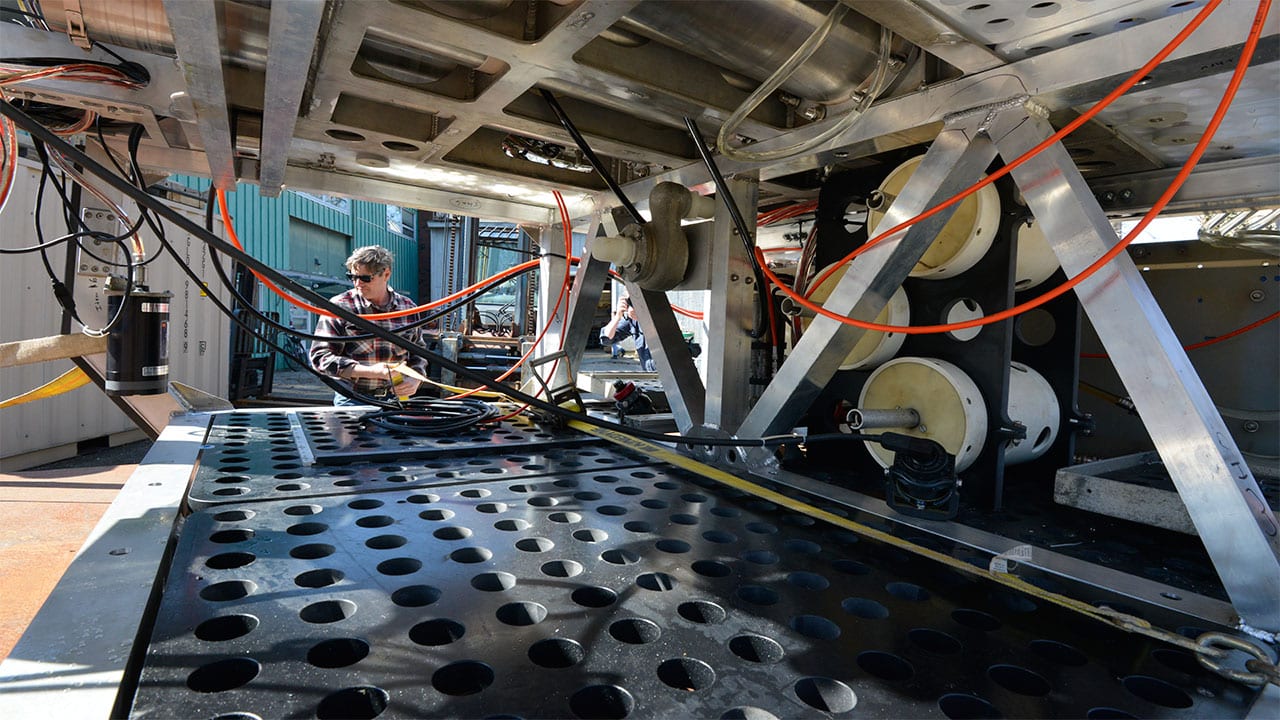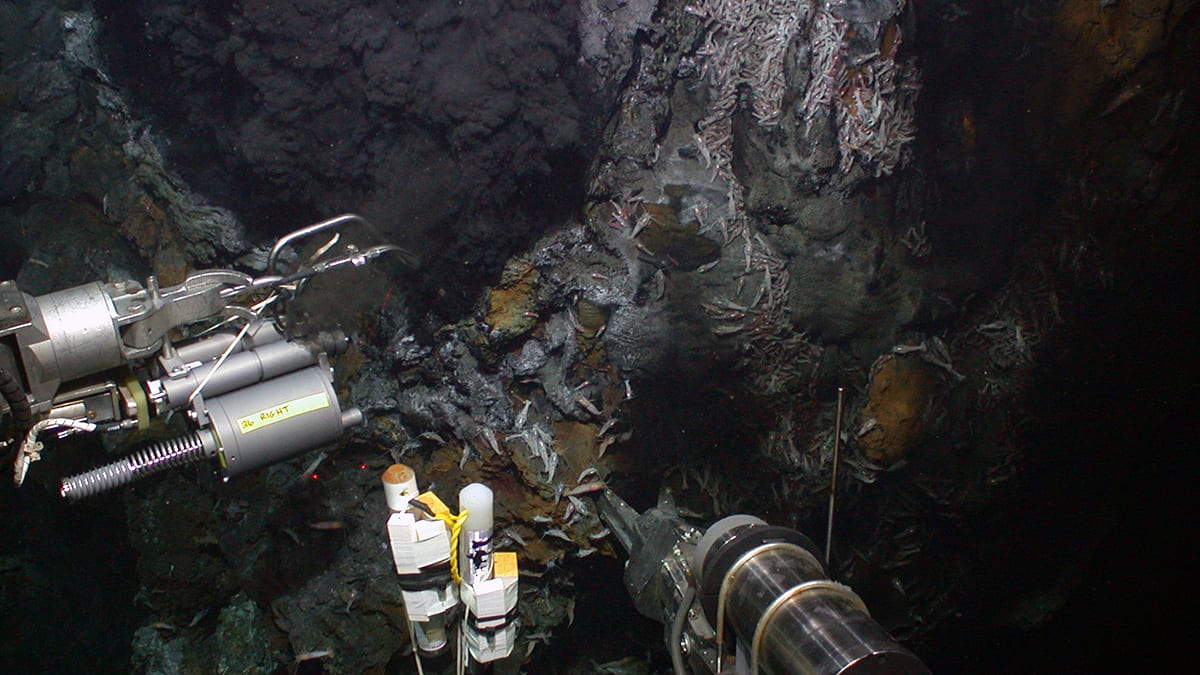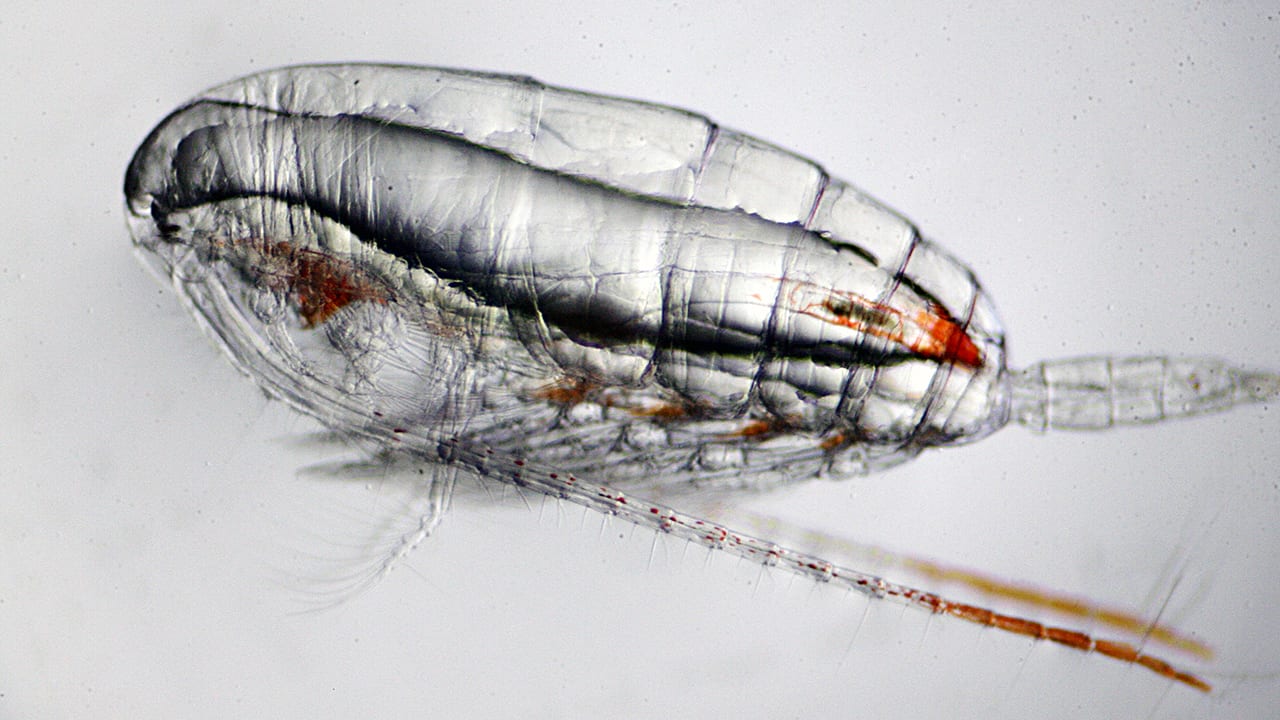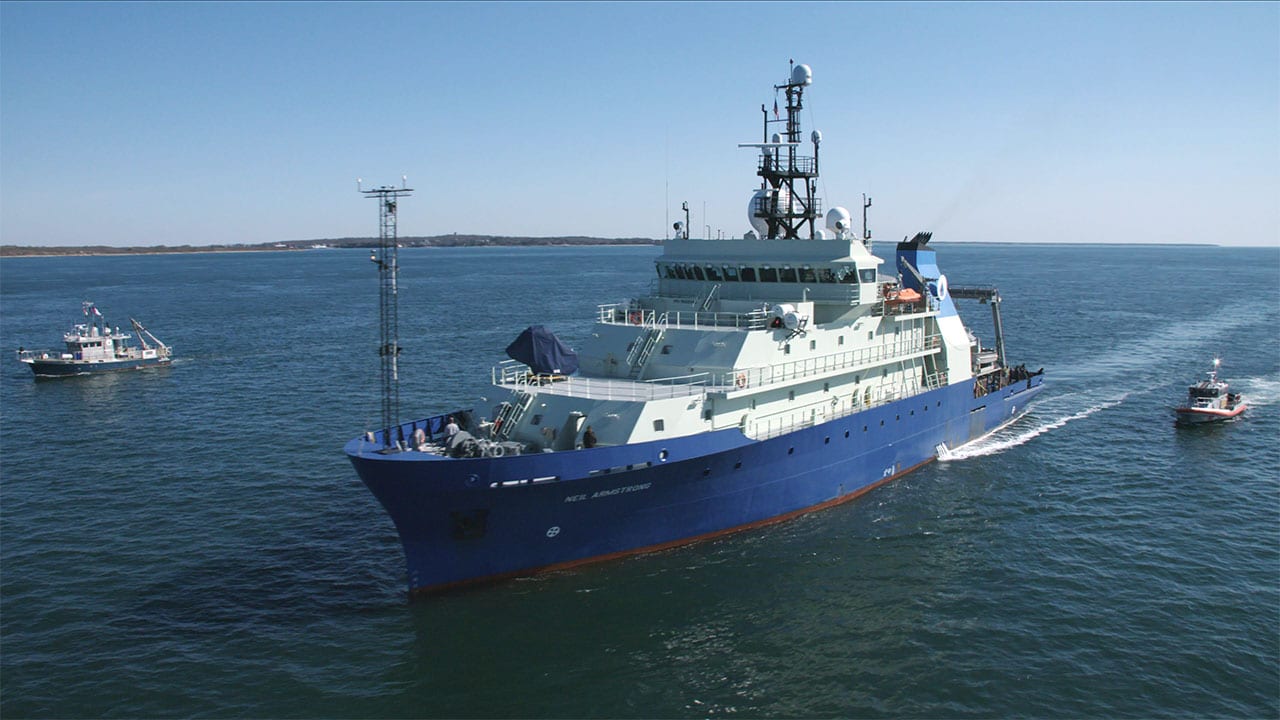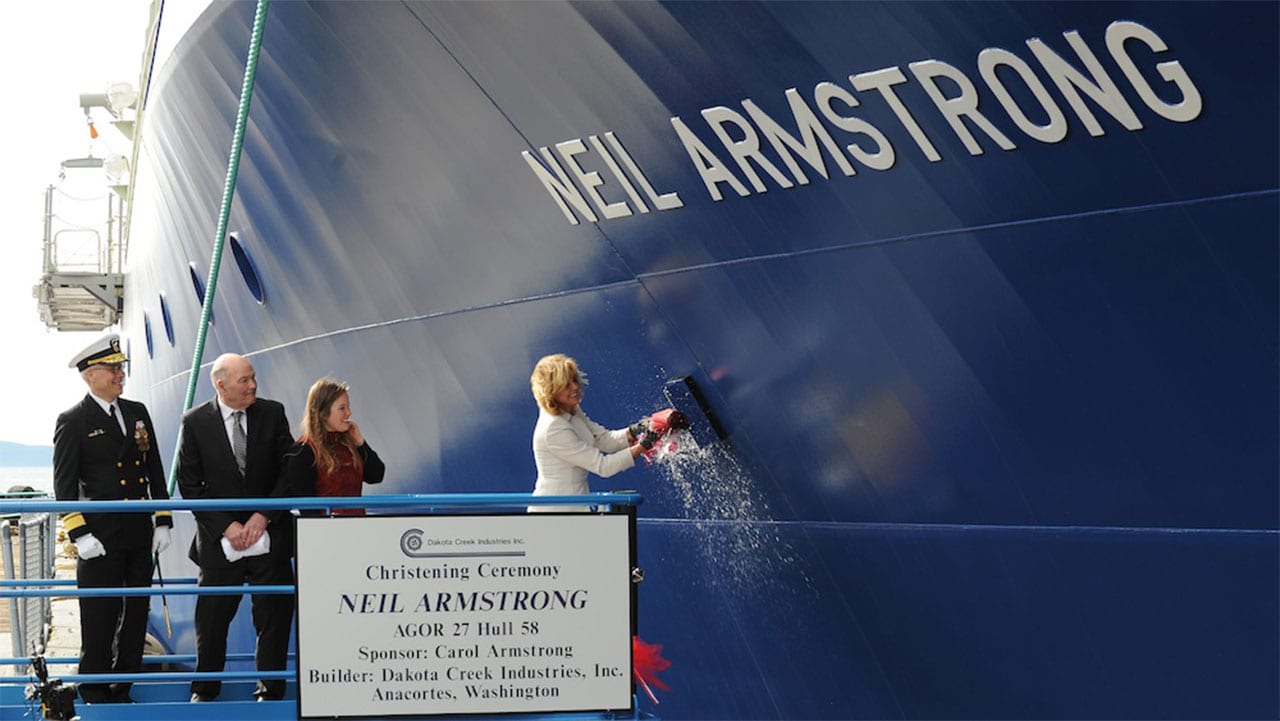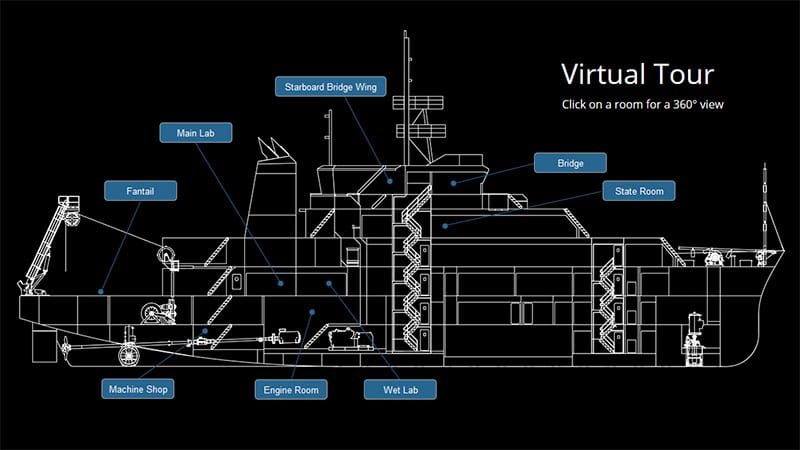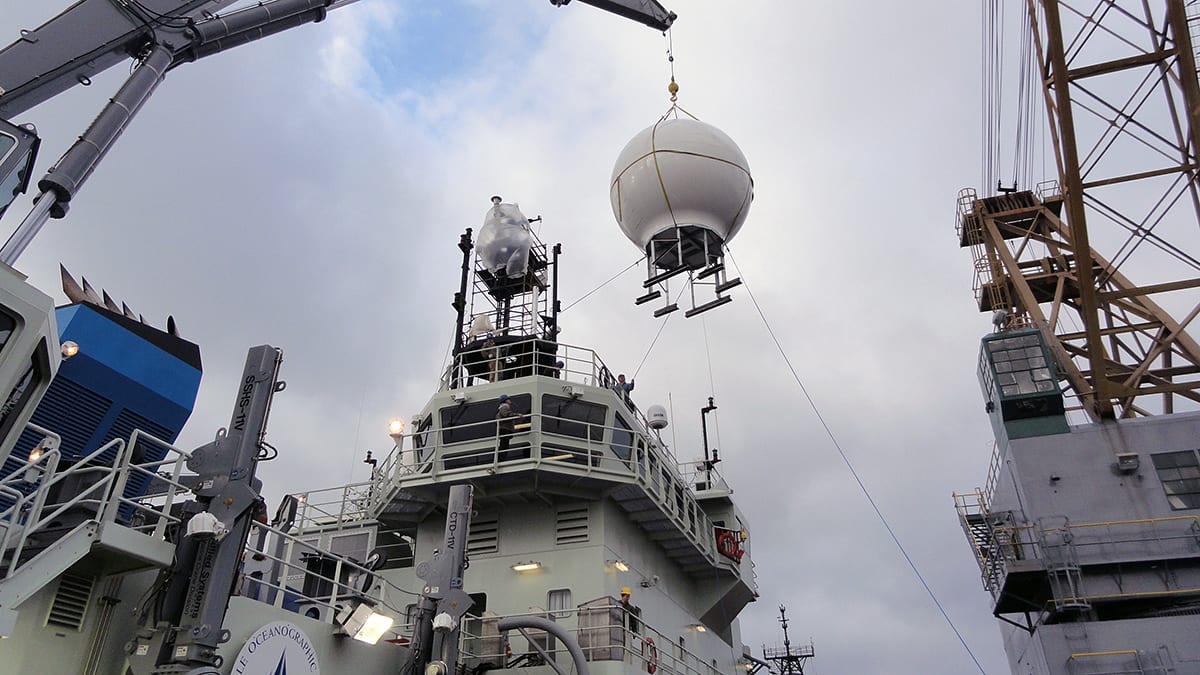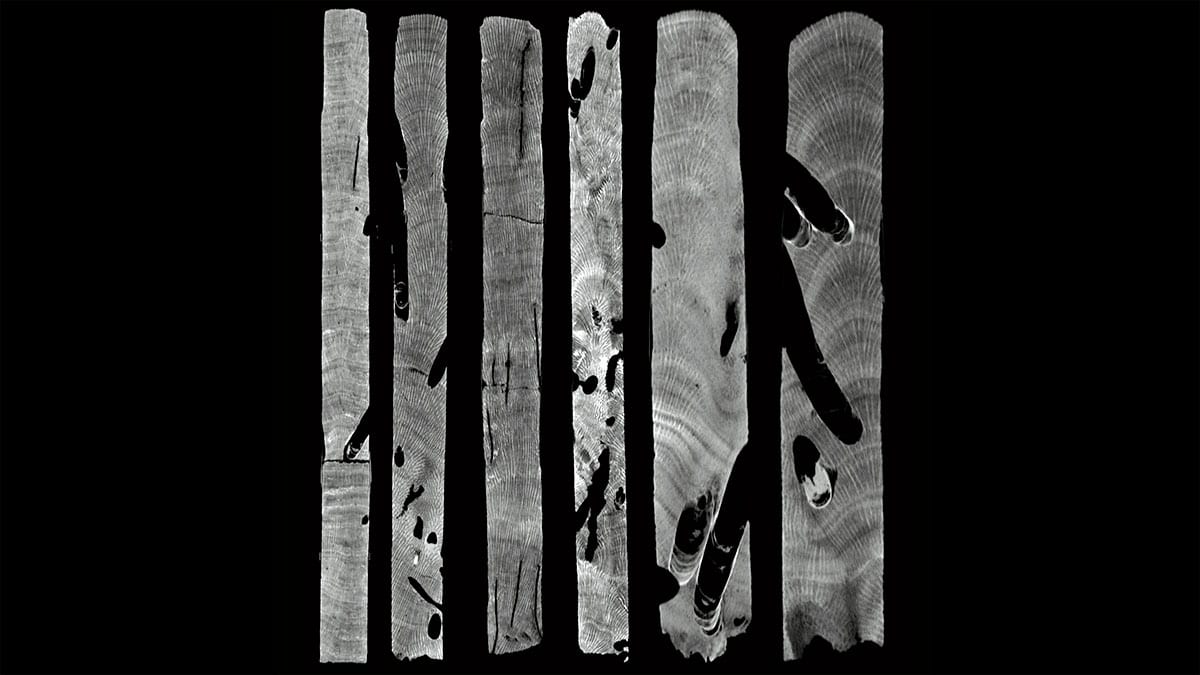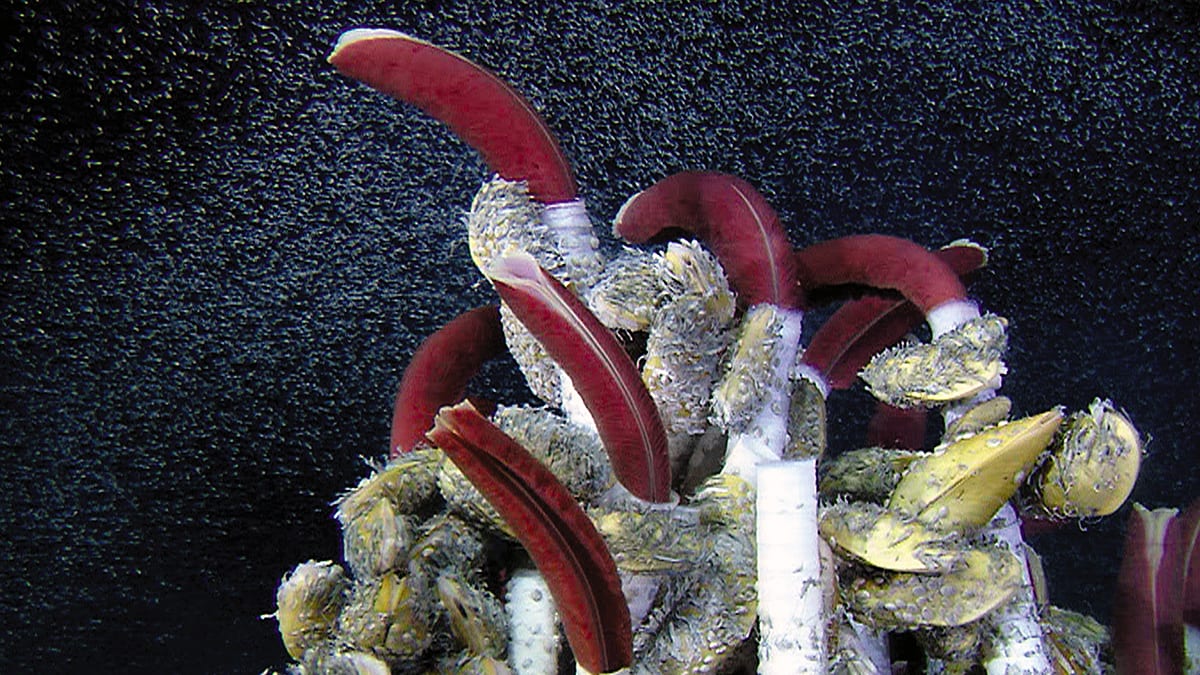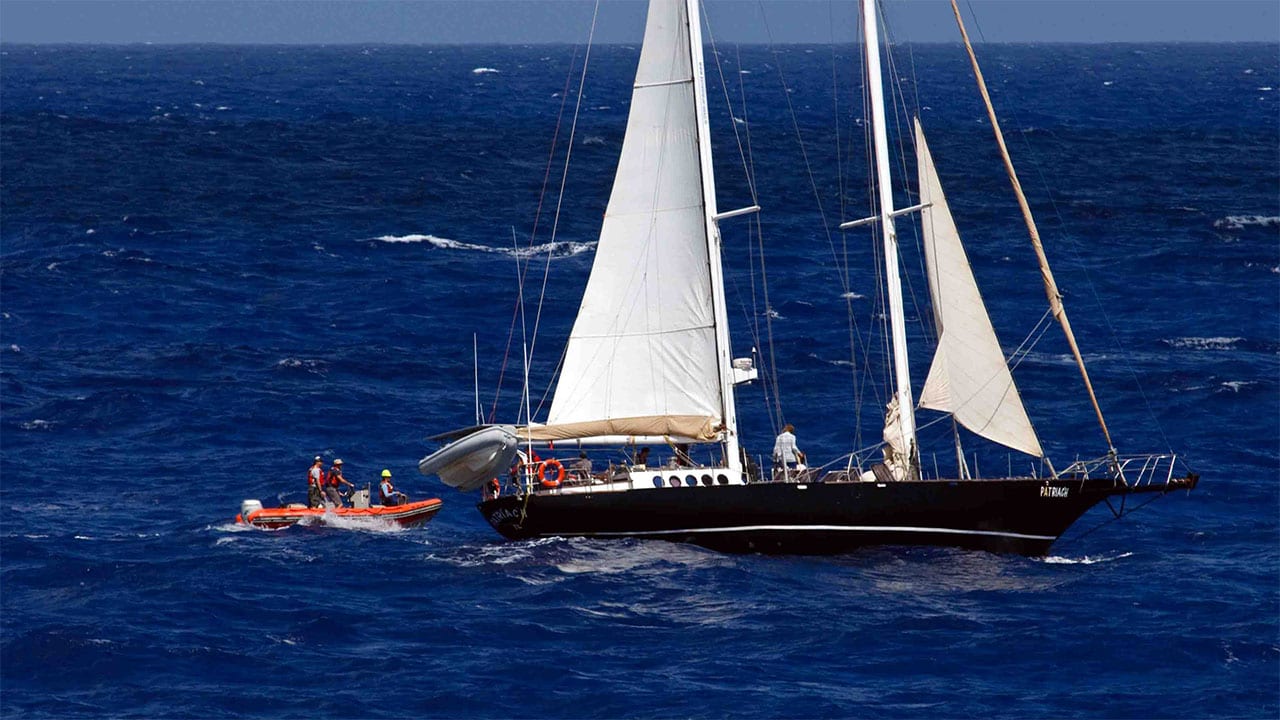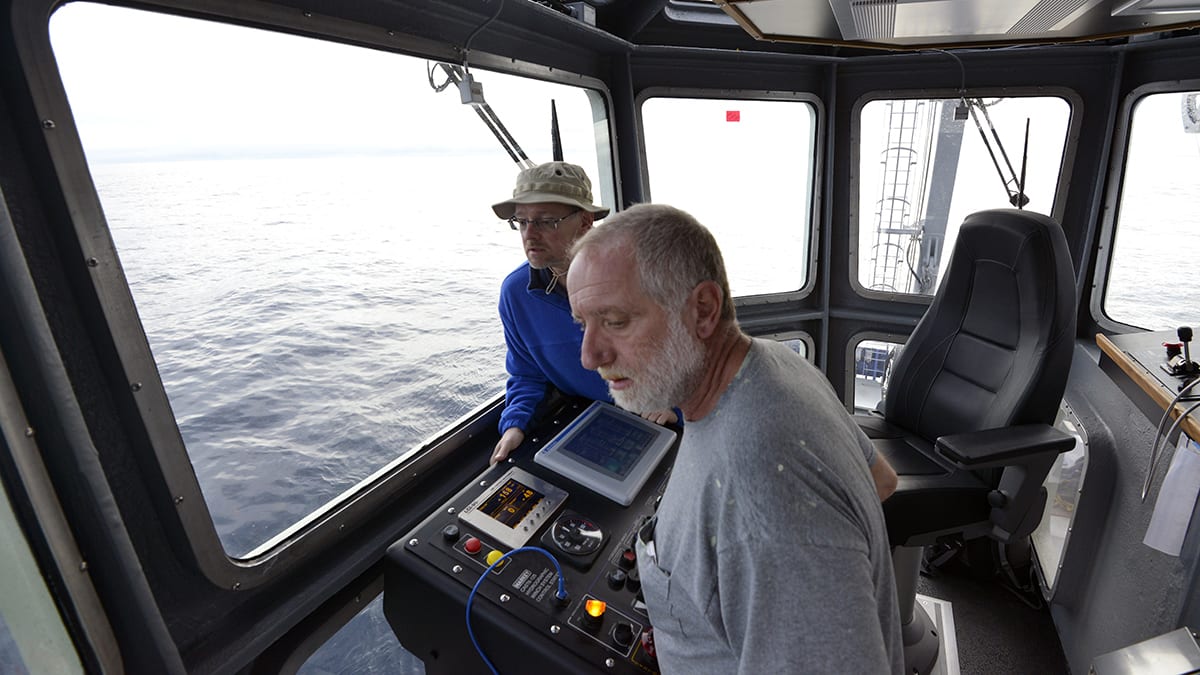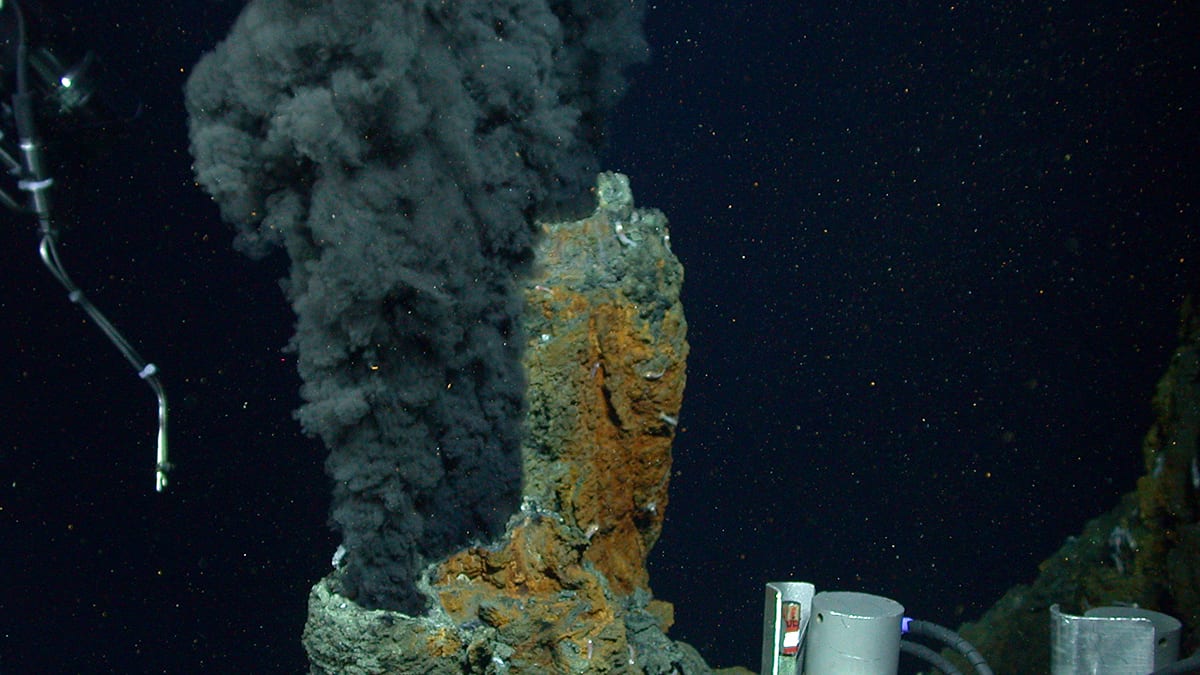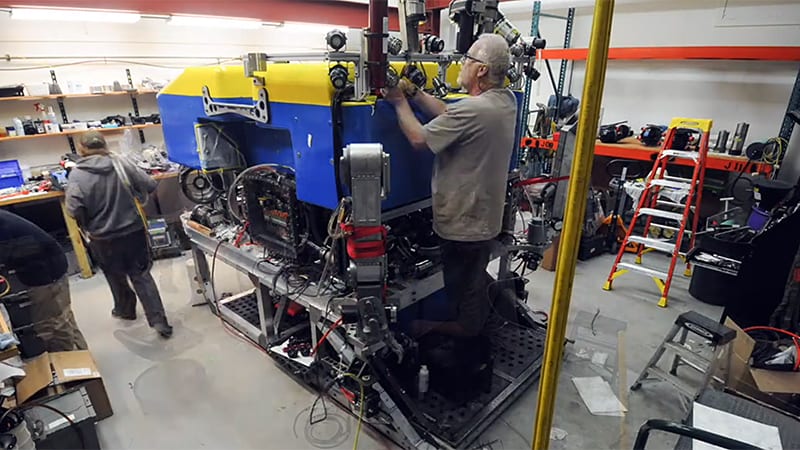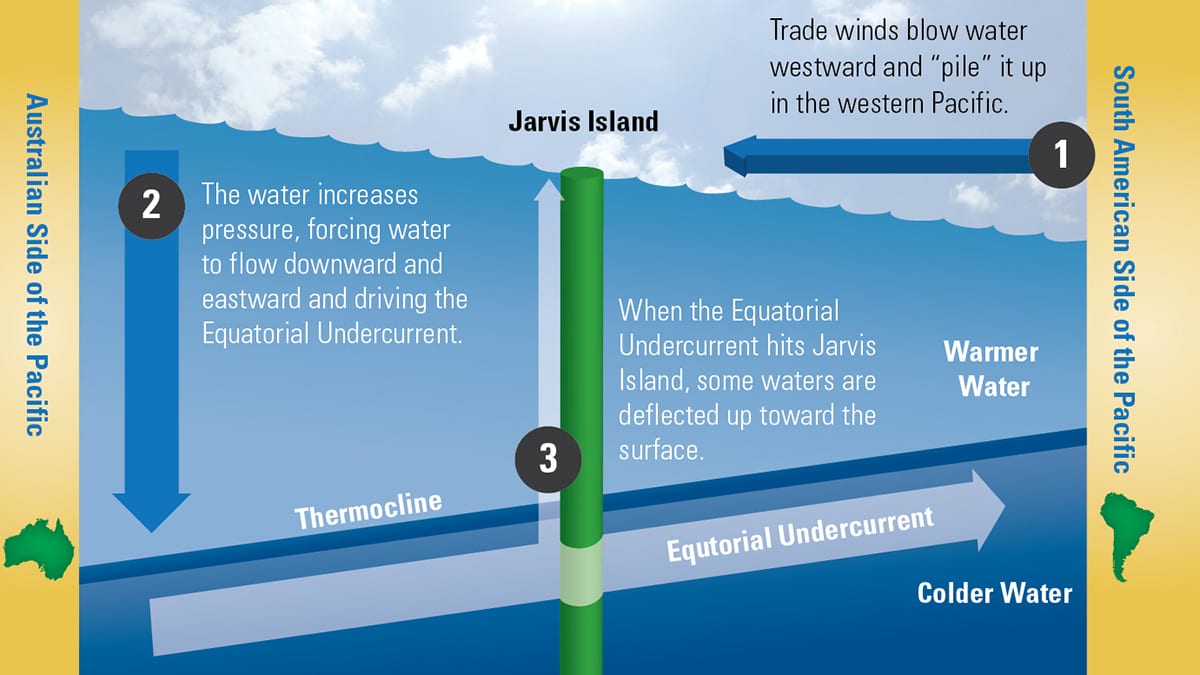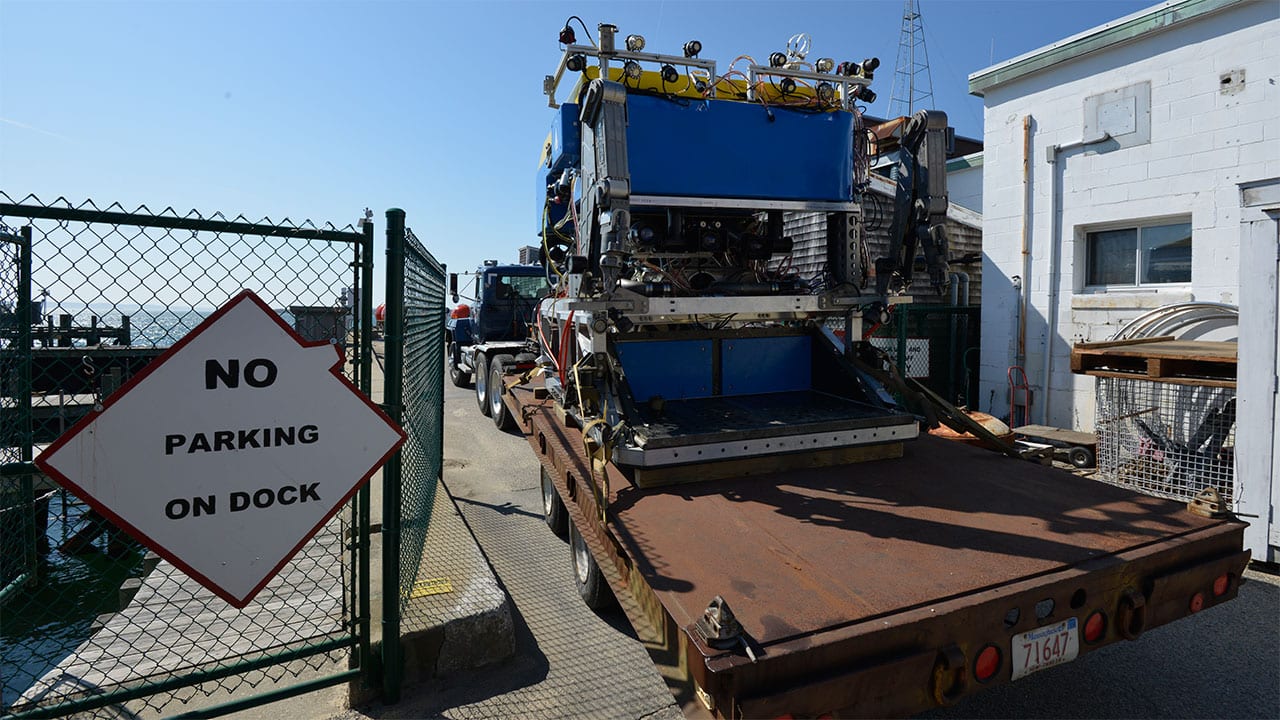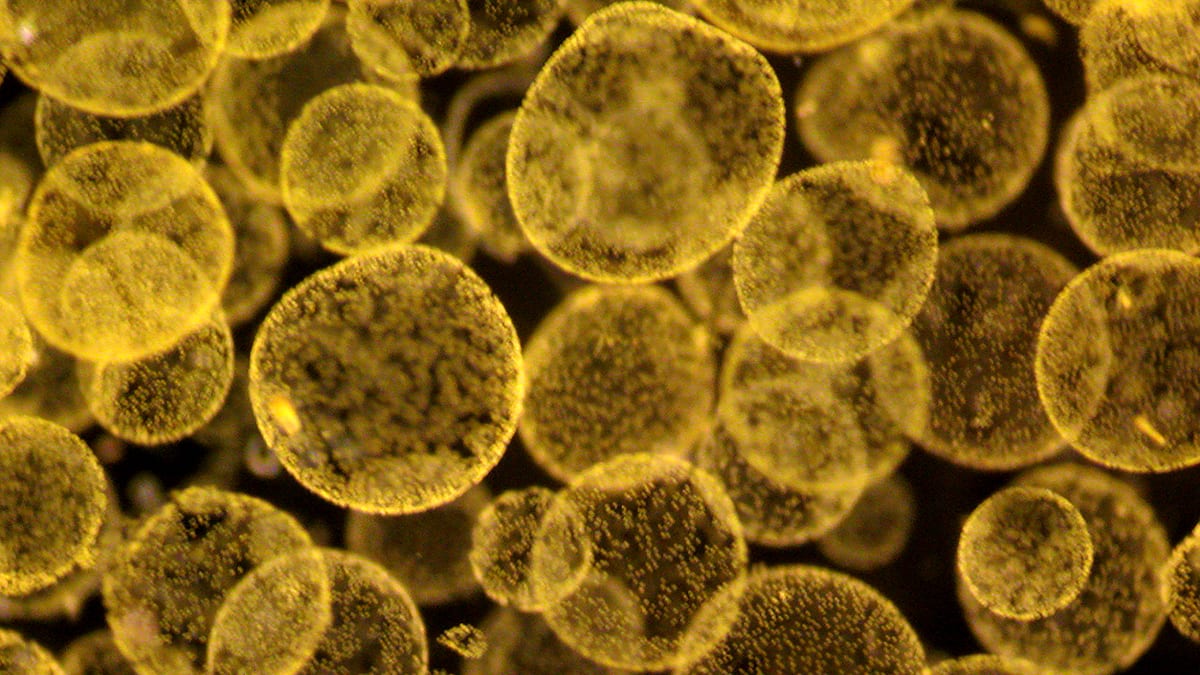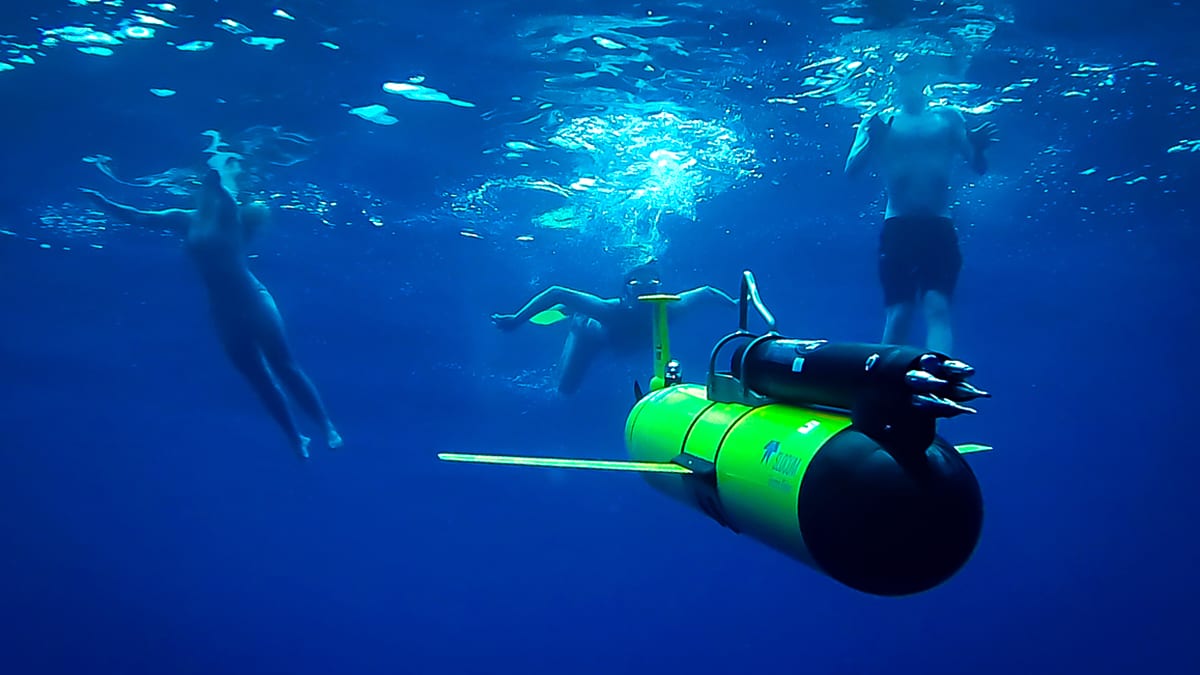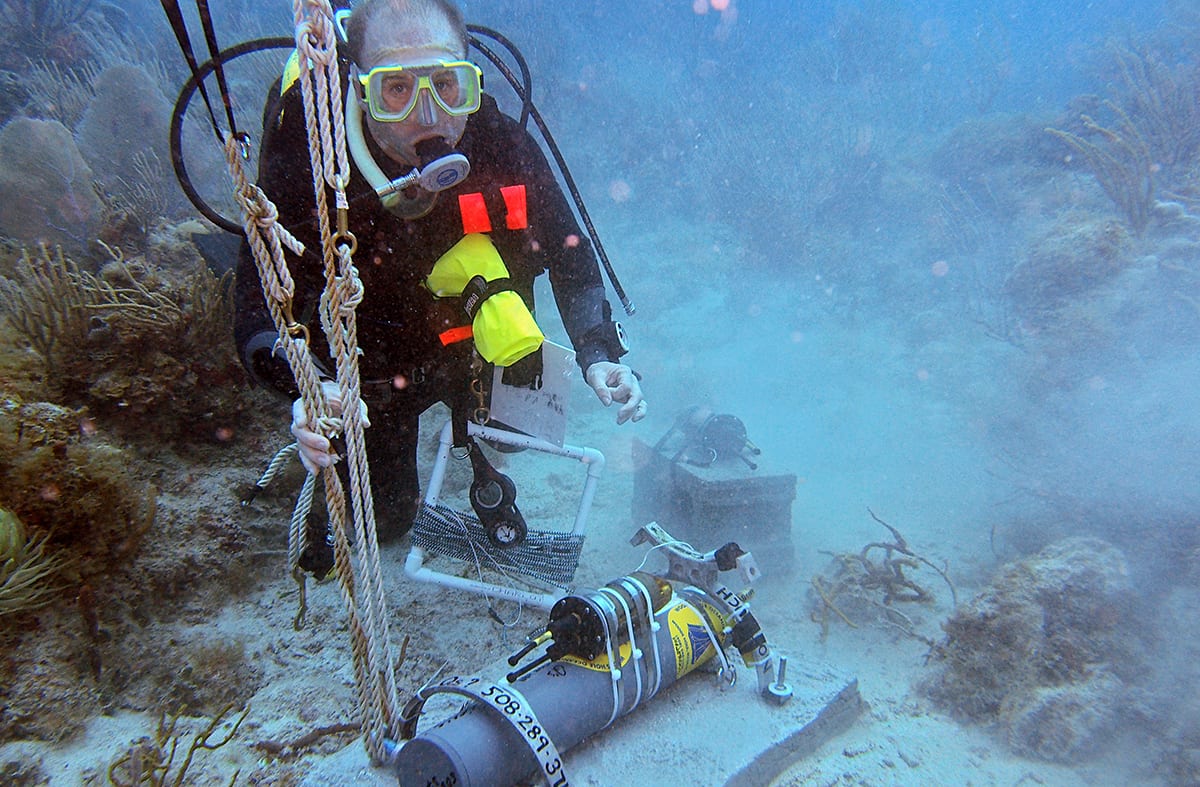Multimedia
Biogeochemical Pioneer
Geoff Eglinton (1927-2016) influenced and inspired generations of marine chemists for more than 25 years as a WHOI adjunct scientist. In 2015, he penned an article for Oceanus magazine, commenting on…
Read MoreSampling the Past
These miniscule sediment samples were collected by Kristen Esser, a guest student from Northeastern University interning in the Coastal Systems Group Lab. Lab members have gathered cores from around the…
Read MoreHeat Wave
MIT-WHOI Joint Program graduate student Hanny Rivera removes a tissue sample from a bleached coral on Jarvis Island in the equatorial Pacific. Anne Cohen’s lab received an NSF RAPID response…
Read MoreMooring the World
WHOI senior scientist Bob Weller and Ruth Curry, a senior research specialist, recover an Ocean Observatories Initiative (OOI) mooring in the Irminger Sea. WHOI has partnered with the National Science…
Read MoreStrapped In
WHOI senior mechanic Doug Handy checks the straps on the newly upgraded remotely operated vehicle (ROV) Jason prior to moving the vehicle to the Iselin Marine Facility for dock trials.…
Read MoreSampling Black Smokers
WHOI researchers inside the human-occupied vehicle (HOV) Alvin use the submersible’s robotic manipulator arms to collect samples of the hot, acidic, metal-rich fluids discharging from a hydrothermal vent more than…
Read MoreAbundant Tiny Hosts
Under a microscope, a copepod looks fearsome, but at only one-sixteenth of an inch, it won’t bother you on a swim. People seldom see these tiny marine crustaceans, but they…
Read MoreWelcome Wagons
WHOI’s coastal research vessel R/V Tioga (left) and a U.S. Coast Guard vessel were among the flotilla that also included three fireboats from neighboring towns escorting R/V Neil Armstrong as it arrived in…
Read MorePresenting: Neil Armstrong
Carol Armstrong, wife of Naval aviator and the first man to set foot on the moon, Neil Armstrong, christened the research vessel bearing her husband’s name in 2014. R/V Neil Armstrong…
Read MoreR/V Neil Armstrong Virtual Tour
Take a 360° virtual tour of the R/V Neil Armstrong. Explore labs, bridge, and living quarters to see how ocean science happens at sea.
Read MoreR/V Neil Armstrong Meet the Ship
Topping it All Off
In February, R/V Neil Armstrong spent some time in a shipyard in Charleston, S.C., to have its scientific equipment installed, including a satellite antenna, shown here. Most of its sensors are…
Read MoreHidden Battles
These images, which are CT scans similar to those taken at hospitals of the human body, provide a detailed look inside coral skeletons. The holes were made by bioeroders, small…
Read MoreTwo Ships
After R/V Knorr (now Rio Tecolutla) departed Woods Hole for the last time earlier in March, the ship headed south to its new home in Mexico. Along the way, off the coast of…
Read MoreLife Lessons
Hydrothermal vents, fissures where minerals dissolved in hot seawater pour out of the seafloor, were discovered in 1977 aboard the submersible Alvin. The amazing variety of organisms that call the…
Read MoreHelping Hand
Personnel transfers on the open ocean are rarely easy, so when a request comes for one it’s usually serious. The Coast Guard received notice recently of a sick crewmember on…
Read MoreWatch and Learn
Peter Liarikos (foreground), bosun on R/V Neil Armstrong, gets help from a representative of Markey Machinery in learning how to control the ship’s hydro winches and new launch-and-recovery system (LARS). The…
Read MoreVent Value
Humans have known about deep-sea hydrothermal vents only since 1977, when an expedition using the submersible Alvin explored a site in the Pacific along the mid-ocean ridge. Vents have been…
Read MoreROV Jason Upgrade Timelapse
In 201516, WHOI completed a major $2.4M upgrade of ROV Jason, boosting its capabilities, payload, and range—the first major rebuild since 2002.
Read MoreDot in the Ocean
Jarvis Island is an uninhabited island on the equator in the mid-Pacific Ocean. As trade winds push warm surface waters west across the Pacific, the deep Equatorial Undercurrent (EUC) transports…
Read MoreReady for Splashdown
WHOI’s remotely-operated vehicle (ROV) Jason heads onto the dock in Woods Hole after undergoing a $2.4 million overhaul funded by the National Science Foundation that included a year-long engineering effort and took…
Read MoreGolden Globes
This universe of golden-yellow bubbles is actually a sample of Antarctic marine phytoplankton called Phaeocystis. The tiny yellow dots on each ball are actually individual algal cells forming hollow spherical colonies…
Read MoreFine-scale Measurements
Researchers from the University of KwaZulu-Natal watch as a sensor-equipped Slocum Glider takes measurements off the east coast of South Africa. WHOI physical oceanographer Louis St. Laurent is collaborating with…
Read MoreAcoustic Eavesdropping
Coral reefs provide habitat for 25 percent of all marine species, but are facing threats from warmer temperatures and lower pH. WHOI biologist Aran Mooney (above) and Max Kaplan, a…
Read More
